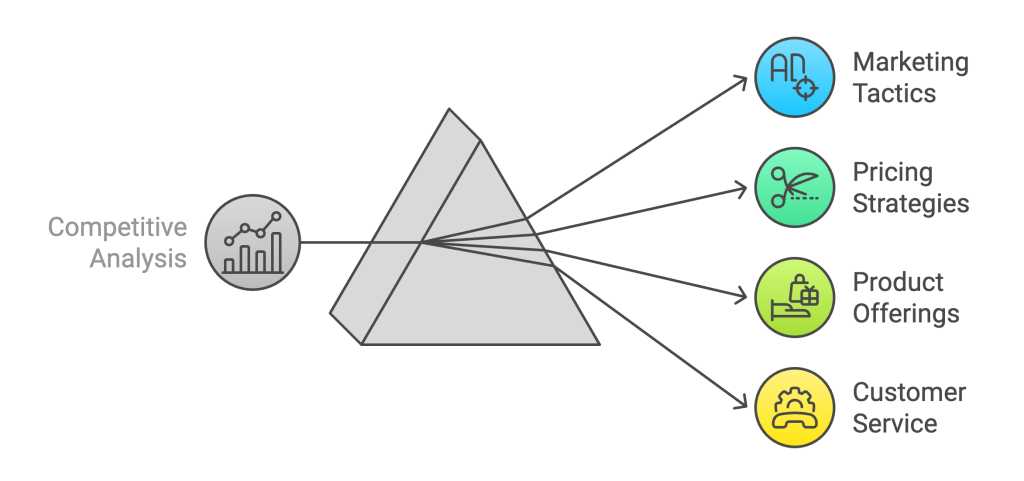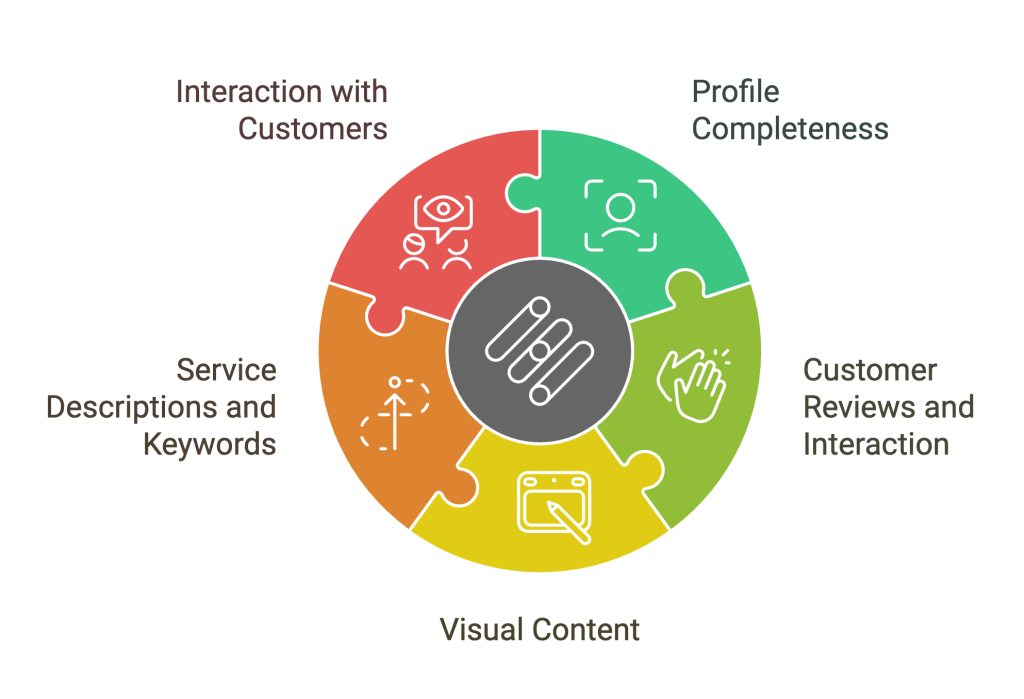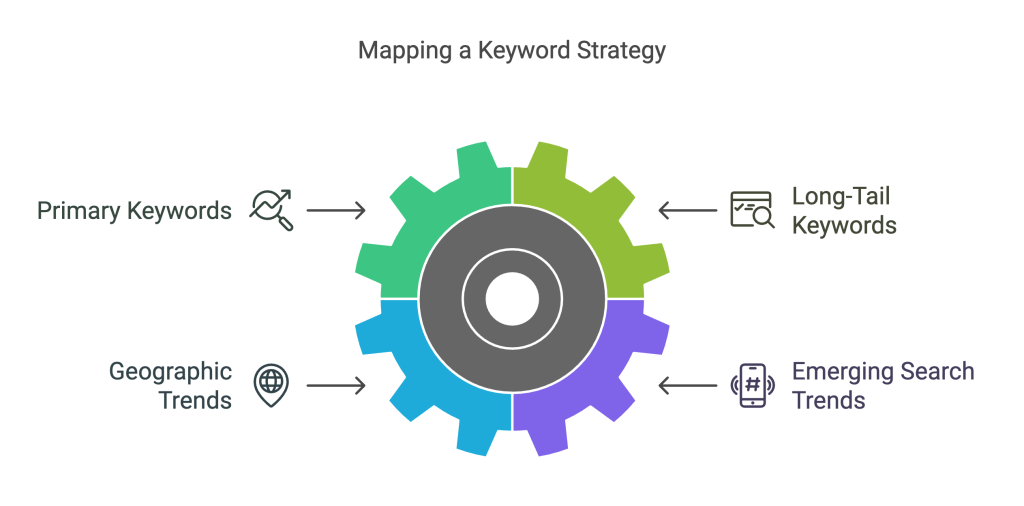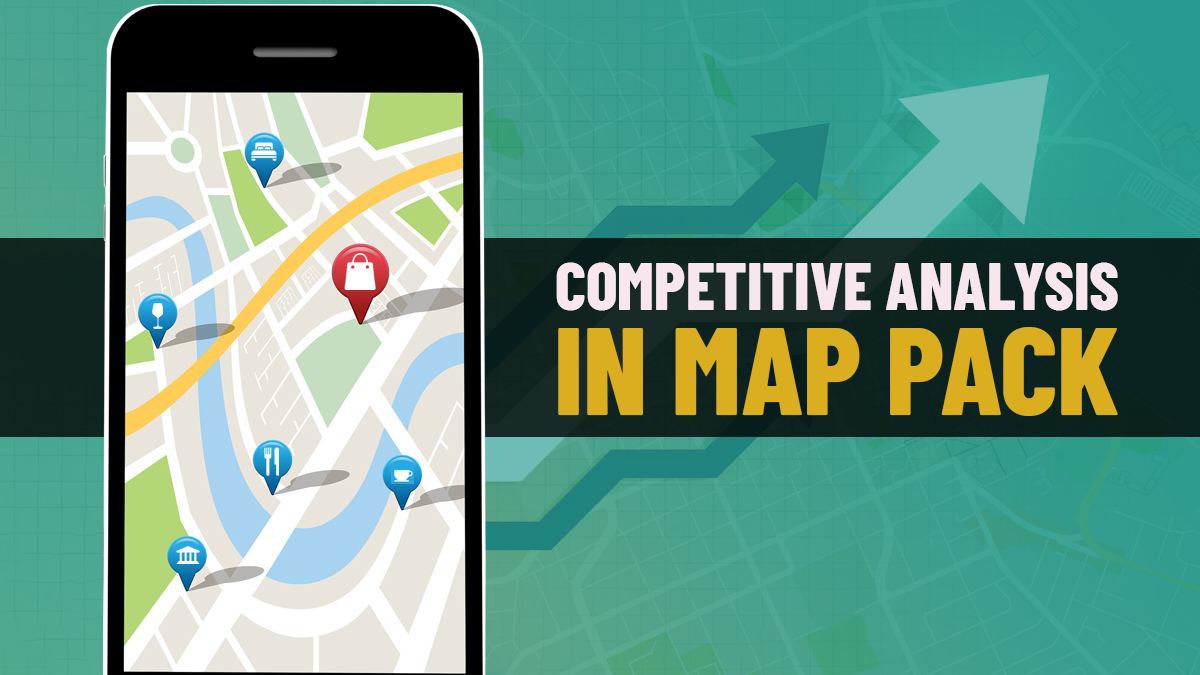Understanding your competitive landscape isn’t optional—it’s essential. Success doesn’t happen by chance; it requires deliberate, informed decisions, and competitive analysis in map pack is one of the most powerful tools in your arsenal.
This process goes beyond simply knowing who your competitors are. It’s about uncovering key insights that reveal industry trends, highlight gaps in the market, and help you anticipate shifts before they occur. With this knowledge, you can refine your local SEO strategies, emphasize your brand’s uniqueness, and position yourself as a market leader.
Competitive analysis for Google map SEO clarifies your market, identifies opportunities, and develops strategies to stay ahead. Whether launching a new business or expanding, this guide provides actionable steps to outpace competitors and thrive.
Understanding Competitive Analysis In Map Pack
A competitive analysis in map pack is a strategic imperative for local businesses. By dissecting the strategies of your competitors in the local market, you can identify opportunities, mitigate threats, and solidify your market position.
A thorough map pack competitor analysis can involve examining various aspects of your competitors’ businesses, such as their marketing tactics, pricing strategies, product offerings, and customer service. Understanding their approach allows you to differentiate your brand, capitalize on market gaps, and outmaneuver the competition.

Google Maps SEO marketing services leverage competitive analysis in the Map Pack to optimize your business listing, improve local rankings, and drive targeted customer traffic.
Analyze The Strengths And Gaps In Your Business Operations
A detailed competitive analysis in map pack should be an important part of your 3 pack ranking strategies. It allows you to understand how your competitors are perceived and to assess your brand’s strengths and weaknesses. Identifying your strengths helps define your market position and shape the perception you want your target audience to hold about your product or service. It is crucial to convey to potential customers why your offering stands out among the available alternatives.
Understanding your company’s weaknesses is equally important, as this insight supports business growth. Recognizing areas where your business does not meet customer expectations enables you to prioritize improvements and allocate resources strategically.
For instance, you might discover that competitors provide better customer service. Examining their approach can offer valuable lessons you can adapt to enhance your business operations.
Understand Your Market And Identify Competitors
Begin by identifying competitors who consistently appear in the Map Pack for key service keywords in your area. These are businesses Google considers top-ranking. This research may often reveal competitors you weren’t aware of or hadn’t considered giving you a clear idea about local pack vs organic results.
Assessing their offerings can help you identify market gaps—areas where customer needs are unmet. This insight enables you to address those gaps, giving your business a unique advantage over competitors.
Key Aspects Of Competitor Profiles To Analyze
A deep dive into your competitors’ Google Business Profiles (GBPs) can reveal the factors contributing to their visibility. Here are some focus areas:

- Profile Completeness: Fully optimized profiles with accurate information, operating hours, and category selections rank better. Ensure your profile is as detailed as your competitors’, if not more so. It should also include map pack image optimization.
- Customer Reviews and Interaction: Competitors with high-quality reviews demonstrate trustworthiness. Analyze how they solicit and respond to reviews—active engagement positively influences rankings.
- Visual Content: High-quality images and videos enhance user engagement and click-through rates. Observe how competitors use visuals to showcase their services and update profiles regularly.
- Service Descriptions and Keywords: Review competitors’ service descriptions for clarity, relevance, and the incorporation of local and industry-specific keywords. This can inform your content strategy for better targeting.
- Interaction with Customers: Businesses that respond promptly to reviews and messages establish better customer relationships. Analyze competitors’ interaction frequency and tone to refine your engagement approach.
Spot Trends And Set Benchmarks
Competitive analysis in map pack can also help you identify emerging industry trends. However, avoid mindlessly replicating their strategies. Instead, consider customer needs and tailor your offerings to create unique value.
Benchmark against both established and newer competitors. Established businesses provide a model for success, while newer entrants can highlight potential threats or innovative approaches in the market.
Keyword Strategy For Competitive Edge
A robust keyword strategy is essential for Map Pack rankings. Tools like SEMrush or Ahrefs can provide insights into the following:

- Primary and Long-Tail Keywords: Identify competitors’ top-performing keywords. Target overlooked long-tail keywords to capture niche traffic.
- Geographic Trends: Analyze which locations competitors dominate and identify underserved areas for potential growth.
- Emerging Search Trends: Stay ahead by identifying trending search terms and incorporating them into your content before competitors do.
Advanced Optimization And Continuous Improvement
To outmaneuver competitors:
- Refresh your GBP regularly with updated visuals and posts.
- Solicit and manage reviews to enhance your online reputation.
- Build high-quality, locally relevant backlinks and citations to boost authority.
Monitor your competitors continuously using tools like SpyFu or BrightLocal. Adjust your strategy in response to new trends, algorithm changes, and competitor activity to maintain your edge in the Map Pack.
What Are The Key Steps To Conducting A Competitive Analysis In Map Pack?
Conducting a competitive analysis requires careful focus. The following six steps will guide you in the process. Before starting, define the objectives of your analysis. Ensure that any additional research areas you include align with these goals.
Know Your Industry Competitors
To identify potential competitors, consider where your customers might go if they did not purchase from your company. A simple approach is to search for your product or service category on Google or another search engine and examine the results. Additionally, you can gather insights by surveying or interviewing your current customers to understand which alternatives they considered before choosing your offering.
Once you have a list, ensure it includes a range of companies for a comprehensive view of the market. It is essential to consider businesses across the three categories of competitors:
- Direct Competitors
Direct competitors offer a similar product or service to the same audience and location targeting. These companies are likely the first to come to mind. For example, a local gym might consider other fitness centers, such as Gold’s Gym or Anytime Fitness, as direct competitors. - Indirect Competitors
Indirect competitors provide different products or services but target an audience similar to yours. For instance, a gym might view home workout apps like Peloton or fitness equipment stores like Dick’s Sporting Goods as indirect competitors, as they cater to consumers who want to stay fit but may not seek a traditional gym membership. - Replacement Competitors
Replacement competitors offer products outside your category that fulfill a similar customer need. This could include health-conscious meal delivery services like HelloFresh or personal trainers who provide one-on-one sessions for a gym. Identifying replacement competitors can be more challenging, but it is essential for assessing potential threats.
While direct and indirect competitors should be the primary focus of your analysis, noting potential replacement competitors is also essential for understanding the broader competitive landscape.
Develop A Comprehensive Competitor Analysis
Before beginning your competitor analysis, it’s essential to organize your approach. A competitor matrix, or competitor grid, is a useful tool for compiling your research in a structured way. This allows you to compare data across competitors and identify broader trends efficiently.
Start by allocating one row or column to each competitor you’ve identified. On the other axis, list the specific data points or categories of information you aim to gather. If you’re unsure of what to focus on initially, don’t worry. You can always add additional categories as your research progresses.
Gather Background Information
When you have your list of competitors to analyze, you must clearly understand competitors’ businesses. The general pattern should start with general information before moving to the detailed information section. You begin by reviewing the company websites, social media profiles, and any posts you can find about them. The most desirable basic information include the following;
- Company History
These aspects are the founding dates, sources of funds and mergers, and acquisitions related to the company in question. This can be obtained from the bottom of its website or in the Press Release section under ‘About.’ By seeing how competitors transformed over time you will have significant insights on their business models and development. - Location
Competitor locations are likewise different regarding industry classifications. E-commerce companies could probably operate internationally, whereas regular companies could only operate regionally. However, it is crucial to establish this information—or rather, their competitors’—geographical areas of operation and places of business. - Company Size
You cannot start by not knowing your competitors’ size. Platforms like LinkedIn and Glassdoor can provide insights into an organisation’s workforce. Secondly, consider whether they employ few customers or have a great revenue ratio. Big corporations can easily provide such information, while small or privatized companies may have to provide estimates. Knowing your competition’s size gives further meaning to some measurements.
Identify The Key Customers Of Your Competitors
A company’s success is highly interrelated with the understanding and serving of its customers. Insights into who your competitors are targeting can give you a significant edge in crafting your business strategy. It helps you understand market trends, gaps, and opportunities that you may otherwise miss. To determine accurately who is the target customer for any business, do the following:
- Look through their mission statement: A company’s mission statement usually includes its key values and objectives, which can help you determine the customer the company seeks. The mission statement also provides an overview of long-term objectives and what to prioritize first among other customers.
- Analyze their messaging approach: Review their marketing materials’ tone, language, and content. Are they promoting luxury, affordability, or lifestyle? This could help you better understand the types of customers they are appealing to based on emotional appeal, benefits from the product, or value propositions.
- Observe their social media interactions: Pay attention to how customers interact with their posts. Are they answering customer inquiries, sharing user-generated content, or exhibiting certain demographics? Social media can be a great way to judge who interacts with your brand and can provide direct insights into your target market.
Check if they highlight existing customers in their content. Many companies feature testimonials, case studies, or customer success stories to build credibility and trust. By studying these examples, you can better understand the types of customers they have successfully attracted and the characteristics of their ideal audience.
Collecting this information will help you build a clear and detailed profile of the audience your competitors are trying to reach. Since your competitors in the same industry will likely target similar customer segments, these profiles will likely overlap with your own target market.
However, noticing even the subtle differences in the profiles is imperative. These subtleties might point to unseen opportunities or nuances you could utilize to better serve your customers. By being aware of such differences, you can better market your offerings.
Embrace The 4 P’s For Success In Marketing
Once you have identified each competitor’s target customers, the next step is to examine how they reach that market segment. This requires a thorough analysis of their marketing strategies.
The marketing mix, commonly known as the 4 P’s—product, price, promotion, and place—forms the foundation for introducing a product to the market. In your research, consider the following questions for each selected competitor:
- Product
- What product or service are they offering?
- What are the key features of their product or service?
- What makes their product or service appealing to customers? What are its potential weaknesses? (A good approach: Review customer feedback for insights.)
- Price
- What pricing model do they adopt? Is it based on a one-time purchase or a subscription model?
- What is the cost of their product or service? Do they provide discounts or special offers?
- How does their pricing align with the quality or perceived value of their offering?
- Promotion
- How do they promote their product or service? Which advertising channels do they utilize (e.g., social media, email campaigns, print media)?
- What aspects of their product or service do they highlight? What is their unique selling proposition (USP)?
- How do they communicate their brand? What is their company story?
- Place
- Where are they selling their products or services? Are their offerings available online, in physical stores, or both?
- Do they sell directly to customers or collaborate with retailers or third-party platforms?
- These questions will help guide your research. However, you can adjust them based on your industry or specific research objectives.
You will likely gather a substantial amount of information. Organizing your findings into concise bullet points is crucial for easy reference. Additionally, include quantitative data wherever possible, as it strengthens your insights.
Recognize Your Key Strengths And Weaknesses In Comparison To Others
To thoroughly analyse competitors, start by assessing their strengths and weaknesses. Then, determine why consumers prefer one company’s product or service. Finally, clearly document all your findings in a spreadsheet.
Then, evaluate your business’s strengths and weaknesses. Compare your company to the competitors you have researched. Knowing what sets your business apart from others and where it may be lacking will help you better meet the needs of your target customers.
Competitor analysis is just the starting point for your strategic planning. It provides valuable insights that will help guide your decision-making. One way to utilize this information is through SWOT analysis, which evaluates strengths, weaknesses, opportunities, and threats. This method enables you to sift through the research and develop actionable steps toward improvement.
Competitive analysis should remain an integral part of your business planning. Periodically review your findings and update them to stay well-informed about market swings. It is important to know your competitor for the long-term success of even a giant corporation or a small startup company.
Conclusion
Conducting thorough competitor analysis is important in building a robust market strategy. Systematic appraisal of strengths, weaknesses, pricing and marketing practices, and customer involvement by competitors helps firms understand the dynamics of their industry. Thus, one can spot market gaps, customer needs, and emerging trends as a source of competitive edge. Furthermore, a comprehensive competitor analysis indicates the areas where businesses can improve their offerings to stay relevant and appealing to their target audience.
Competitor analysis prepares businesses to face eventual threats and changes in the marketplace. It supports informed product development, pricing strategies, and promotional campaigns as a precursor to change. Keeping an eye on competitors and amending strategies is the only way businesses can remain vigilant, innovative, and capable of securing a better position in the marketplace. Therefore, the use of competitor analysis goes beyond just being a reactivity tool; it stands as a proactive strategy for longer-term growth and success.
FAQs
How do I identify my competitors?
Identifying competitors starts with categorizing them into direct, indirect, and potential competitors. Direct competitors offer similar products or services and target the same audience. Indirect competitors provide alternative solutions to the same problem. Potential competitors are businesses that may enter your market in the future. Tools like online searches, industry reports, and customer feedback can help pinpoint these competitors
What is the role of benchmarking in competitor analysis in map pack?
Benchmarking involves comparing your business’s performance metrics, such as revenue, market share, or customer satisfaction, against those of your competitors. This process helps you understand how well your business performs relative to others in the market and highlights areas where you need to improve to match or surpass competitors’ standards.
What are the common challenges in competitor analysis?
Common challenges include accessing reliable data, distinguishing between useful insights and noise, and avoiding confirmation bias. It can also be difficult to track all competitors comprehensively, especially in dynamic industries. To overcome these challenges, use a mix of qualitative and quantitative data sources and prioritize actionable insights over exhaustive detail.
How can I apply competitor analysis to improve my business?
Insights from competitor analysis can guide improvements across various business areas. You can refine your pricing strategy, enhance product features, or tailor your marketing campaigns based on competitors’ strengths and weaknesses. Additionally, understanding customer preferences and market trends highlighted by competitor research can help you innovate and create offerings that better meet customer needs.
























